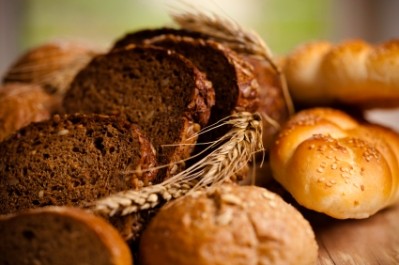EFSA backing for resistant starch claim may spur bakery innovation
In the fourth batch of article 13 general function health claims, EFSA issued a positive opinion for a claim that resistant starch (RS) can reduce post-prandial glycaemic and insulinaemic responses when replacing digestible starches in high carbohydrate baked goods by at least 14 per cent.
However, the Panel on Dietetic Products, Nutrition and Allergies (NDA) did not approve the additonal claims for RS in relation to 'digestive health benefits' and 'favours a normal colon metabolism' as it said these did not refer to "any specific health claim as required by Regulation (EC) No 1924/2006."
The NDA said most of the studies provided for the healthy blood glucose/sugar levels health claim for RS reported a significant decrease in post prandial glycaemic responses, without significantly increasing insulinaemic responses, following intake of RS type 2 “as a partial replacement of digestible starch in baked goods."
While RS type 2 from high amylose maize was subject of the claim, the NDA found that the effect of replacing digestible starch in foods with RS on post prandial glycaemic responses could be expected from all RS types, and that "this effect is not specific to RS2 from high amylose maize."
The panel thus concluded that causality had been established between the consumption of resistant starch from all sources, when replacing digestible starch in baked foods, and a reduction of post prandial glycaemic responses.
RS ingredient development
Resistant starch (RS) is so called because of its ability to resist digestion in the small intestine, unlike most other starches. RS passes through to the large intestine where it acts like dietary fibre.
RS occurs naturally in foods such as unripe bananas and cooked and cooled potatoes, but commercially produced RS ingredients have started to appear on the market in order to allow food manufacturers to incorporate the ingredient into their products.
This has provided the industry with another means to tap into opportunities gleaned from the growing trend for health and wellness foods, with resistant starch fitting squarely into the low-glycaemic food trend.
Companies like National Starch with its Hi-Maize ingredient, which is derived from corn, have been very active in building the science behind the ingredient.
High-fibre foods demand
A 2010 Datamonitor consumer survey found products positioned as high in fibre can influence buying behavior. It also reported that three out of ten (30 per cent) European consumers claim to purchase functional foods on a regular basis, an improvement on the previous year’s 23 per cent who claimed to do so.
However, Datamonitor analyst Mike Hughes BakeryandSnacks.com that the key challenge for manufacturers to further boost growth is to overcome consumer skepticism that exists towards functional foods in Europe, with the 2010 survey finding that only 25 per cent of European shoppers trust functional health claims.
“If premium prices are going to be charged for functional bread offerings, this trust barrier needs to be overcome,” he cautioned.
RS fortified biscuits and cereals
A study, published in the journal LWT – Food Science and Technology in June last year, found that substituting wheat flour for resistant starch may be an easy way for formulators to boost the health profile of a product without affecting taste or acceptance.
Up to 40 per cent of the wheat flour in a short dough biscuit could be replaced by RS without detrimentally affecting the taste, sweetness and overall acceptance, claimed the findings from Spanish researchers based in the Instituto de Agroquímica y Tecnología de Alimentos (CSIC) in Valencia.
And last month, a Turkey based scientist, writing in the International Journal of Food Science and Technology, said that food engineers should focus more on designing processes that may lead to breakfast cereal products with substantial amounts of RS.
Ayten Alsaffar, noting that changes in moisture, temperature, the duration of heating and subsequent cooling can influence the RS content of foods, found that the current RS levels in commercially available breakfast cereals are not high enough to deliver its beneficial effects.
“The highest RS value, 3.6 g/100 g food (as eaten), is found in corn flakes. These RS values, however, does not appear to be nutritionally significant (Englyst & Cummings, 1987).
The challenge is to generate breakfast cereals with much higher RS contents (such as 10–20 per cent) to make a substantial difference to the physiological properties of these foods,” observes Alsaffar.
Meanwhile, Euromonitor International predicts that the global fortified bakery products market will be worth over €27bn in 2015 from a market value of over €21bn in 2010.














